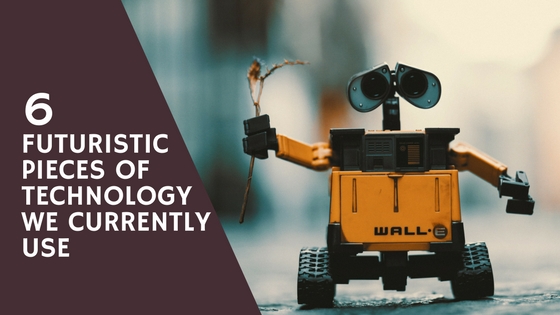For years, humans have speculated on what the technology of the future will look like. We have endless amounts of media, from books to television shows, that take place in the future, whether distant or a few decades from now. In the 1900s, plenty of ideas were thrown around about what the 2000s would look like. While many of these predictions were incorrect (such as individual flight or living underwater), many futuristic technologies featured in science-fiction are common realities of our everyday lives or will likely soon be easily accessible.
Bluetooth
The concept of syncing pieces of technology together and sending signals between the tech seemed incredibly futuristic and unlikely to happen any time soon. However, now all smartphones, most cars, and plenty of other appliances can be tethered to Bluetooth and share information with one another.
Wireless appliances
Developing alongside Bluetooth, wireless appliances are now very common. Many appliances can tap into a larger network and run off of it or simply run on high powered batteries that rarely need to be replaced. Some of these appliances you have to periodically charge, but it gets rid of the issue of constantly plugging and unplugging wires.
Sliding doors
In the original Star Trek series, people used to have to stand on each side of the doors and pull them open as actors walked through, to give the appearance of automatic doors. Now, doors with motion sensors that open on their own can be found at virtually any shopping place and isn’t something most of us really consider advanced technology.
Video calls
Now, you probably don’t think before you Facetime or Skype someone. We use video calling as a form of communication from our job, to our personal lives, to education. Skyping into a meeting or some other event you can’t be at is completely normal. However, this technology was frequently featured in futuristic television shows and seemed a remote possibility for sometime in the future.
Space travel
While most of us will never personally experience space travel, it’s a fairly common occurrence. Visiting the moon has been done multiple times, we have the International Space Station, and regularly send rovers to other places in the galaxy. A hundred years ago, this progress would have been impossible, especially considering humans only invented airplanes relatively recently.
Robots
Robots feature prominently in science fiction and now they’re part of our reality. Robot maids are not common, but most of us have smartphones with assistants like Siri or use Amazon’s Alexa. The Roomba is an increasingly popular robot vacuum. Many production lines use various types of technology similar to the original concept of a robot, though much less human-looking. And sooner than we may think, human-like robots may be working in stores and our homes.

